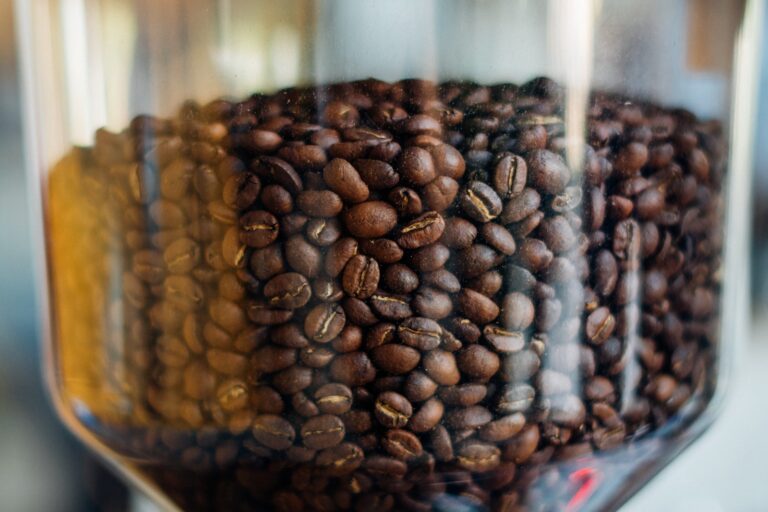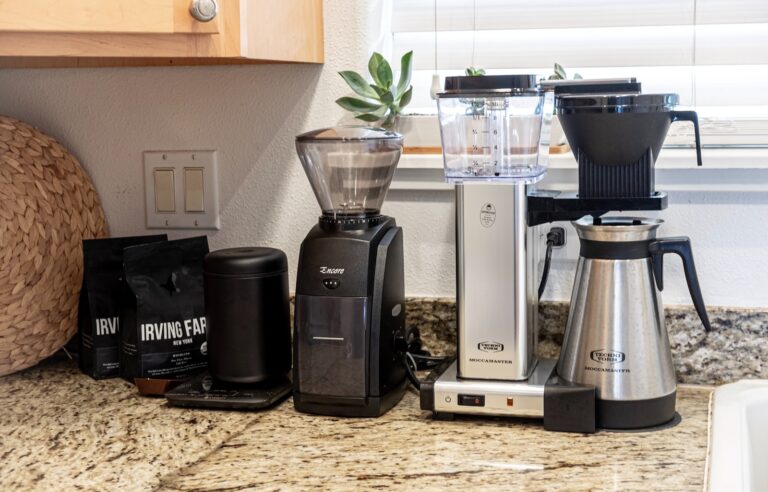Are you tired of mediocre coffee that just doesn’t hit the spot? Maybe it’s time to step up your game by investing in a burr grinder. But with so many options out there, choosing the right one can be daunting for beginners.
Fear not! In this beginner’s guide, we’ll walk you through everything you need to know to find the perfect burr grinder for your coffee needs. From understanding different types of grinders and their features to exploring budget-friendly options, we’ve got you covered.
So sit back, brew yourself a cup of joe, and let’s dive into the wonderful world of burr grinders!
Understanding the Basics of Burr Grinders
Burr grinders are popular for their ability to create a finely ground coffee. There are three types of Burr grinders: manual, semi-automatic, and automatic. The manual burr grinder requires the user to move the grinder arm back and forth across the coffee beans.
Semi-automatic grinders have a sensor that detects when the grinder arm has come to a complete stop, meaning that the beans have been ground sufficiently. Automatic Burr grinders do not have a sensor; instead, they rely on an electronic timer to determine when the beans were ground sufficiently.
The type of bean you choose will affect the type of coffee you can make using your Burr grinder. Coffee with a high acidity should be ground using a Burr grinder with a mesh size smaller than coffee with low acidity. Beans should also be ground coarsely for French Press coffee and finely for espresso. There are many factors to consider when choosing a Burr grinder, such as price, features, size, and grinding quality.
Why Burr Grinders Are Better Than Blade Grinders
Burr grinders are often considered to be the better option for those looking to produce finer ground coffee. They utilize tiny metal burrs that spin at extremely high speeds, which quickly and evenly grind the coffee beans. This results in a much smoother texture and reduced bitterness.
Blade grinders, on the other hand, are typically used for more coarsely ground coffee. They typically have larger blades that chop up the beans rather than grinding them finely. This can result in a bit more bitterness and a coarser texture.
Burr grinders are generally considered to be superior because they produce a smoother flavor and texture when brewed. They’re also easier to use since they don’t require any additional tools or settings once you’ve gotten your bearings.
Different Types of Burr Grinders and Which One to Choose
Burr grinders come in a variety of shapes and sizes, so it can be difficult to decide which one to purchase. Here are three different types of burr grinders and the reasons why each is different: conical burr grinder, flat burr grinder, and screw auger burr grinder.
Conical Burr Grinder
The conical Burr grinder is the most common type of Burr grinder. It has a smalliameter at the base and gradually gets larger as it approaches the blade. This design helps to ensure that the grinding consistency is consistent across all zones of the burrs. Additionally, this type of Burr grinder is easy to clean because all you have to do is remove the screen and wash it by hand.
Flat Burr Grinder
The flat Burr grinder resembles a disc with several progressively smaller holes dug into it. The benefit of using a flat Burr grinder over a conical Burr grinder is that it produces a finer grind because there’s less variance in how finely the grinds are distributed. However, because there’s more variation in how finely the grinds are distributed, flat Burr grinders can also be choosier about what kind of coffee beans they’ll let through – they’re not as forgiving with lesser roasts.
Screw Auger Burr Grinder
The screw Auger Burr grinder is unique in that its grinding chamber comprises several small, round screws that rotate . This design allows the grinder to handle a wide range of beans and grains, making it a good choice for those who want to experiment with different bean selections. But the downside is that it can be more difficult to clean than other types of Burr grinders – all you have to do is unscrew the screws and scrub them clean.
Factors to Consider When Choosing a Burr Grinder
When choosing a burr grinder, it is important to consider the factors below.
Type of Grind:
The type of grind (coarse, medium, fine) will determine the fineness of the grind. A coarse grind will produce more fines and a fine grind will produce less fines.
Burr Type and Material:
There are three types of burrs that can be used in a burr grinder: metal, plastic, or ceramic. Metal burrs are the most durable and tend to be the most expensive. They also create the coarsest grinds. Plastic burrs are less expensive than metal burrs but tend to wear out faster and produce finer grinds. Ceramic burrs are the least expensive but also the least durable. They produce medium-fine ground coffee.
Number of Burrs:
The number of blades on the grinder affects how finely ground coffee is produced. Dual-blade grinders have two sets of blades; tri-blade grinders have three sets of blades; and quad-blade grinders have four sets of blades. More blades mean finer grounds but also increased risk for overheating and potential damage to your beans.
Size and Weight:
The size and weight of the grinder are important factors to consider. A small, lightweight grinder is easier to handle and transport than a large, heavy grinder. It is also easier to set up and use.
Price:
Price is also a important factor to consider when choosing a burr grinder. The more expensive the grinder, the better the quality of the grinds it produces.
Size and Capacity Considerations
When choosing a Burr Grinder, size and capacity are important considerations. Certain grinder models offer greater capacity to grind larger quantities of material than other models. Additionally, many burr grinders come in different sizes, giving you more flexibility when selecting one.
Selecting the right size can be tricky: you don’t want something too small that’s difficult to use, or too large that it takes up a lot of counter space. The best way to figure out what size will work best for your needs is to try out several different models. Once you’ve selected the model that fits your needs best, be sure to read the manufacturer’s instructions so you know how to properly operate it.
Ease of Use and Cleaning
If you’re thinking about upgrading your grinder, there are a few things to keep in mind. Here are three factors that will influence how easily and efficiently your grinder works: the quality of the burrs, the design of the grind mechanism, and ease of use.
When it comes to burrs, the better quality ones have sharp points that reduce friction as they grind your food. They also typically have more abrasion chambers, which help reduce residue buildup and speeds up cleanup. Poorly made burrs can cause scratches in your food which can make grinding difficult and time-consuming. In addition, some grinders have large metal contraptions that sit atop your coffee beans, which can be messy and awkward to clean.
A good design will make grinding easy by keeping the area around the blades clear so you don’t have to wrestle with clumps of coffee beans. It should also feature a Grind adjustment valve that allows you to customize how fine or coarse your ground coffee is. And finally, it’s important that the grinder is easy to use – no matter how experienced you are – so you can get started as soon as you get it home.
Tips for Maintaining Your Burr Grinder
Tips for Maintaining Your Burr Grinder
Clean the grinder on a regular basis using a mild soap and water mixture. Be sure to rinse all the parts thoroughly.
Stop using the grinder if it does not seem to be grinding cleanly or if it is making unusual sounds.
Keep the grinder away from direct sunlight and heating sources, as these may cause it to overheat and malfunction.
Check the guard against small pieces of food periodically-if something has gotten caught in there, remove it with a wire brush or by hand.
Be careful not to over tighten any of the parts of your grinder-doing so can cause damage that may require repair or replacement.
Conclusion: Finding Your Perfect Burr Grinder
Burr grinders come in all shapes and sizes, and they can be a little more expensive than blade grinders, but they offer many advantages. Blade grinders are great for grinding coarse materials like coffee beans, while Burr grinders are better suited for finer materials, like spices.
Here are some factors to consider when choosing a Burr grinder:
Type of Grind: Burr grinders are best suited for grinding fine materials, such as spices or coffee beans. They produce a coarser texture than blade grinders, which is why they’re often used in combination with them.
Size: Burr grinders come in all different sizes, from small countertop models to large commercial models. Make sure you get the size that’s right for your needs.
Speed: Burr grinders range in speeds from slow to fast. Make sure you find a model that fits your needs and is fast enough to handle your mixture.
Noise Levels: Like most devices, Burr grinder noise levels will vary depending on the model you choose and how it’s being used. Some models are quite quiet while others may be louder. Consider how important quietness is to you before making your purchase.



One Comment